The Mystery of Consciousness
Modern science may delve into the
recesses of the brain, but can it explain
the phenomenon of consciousness?
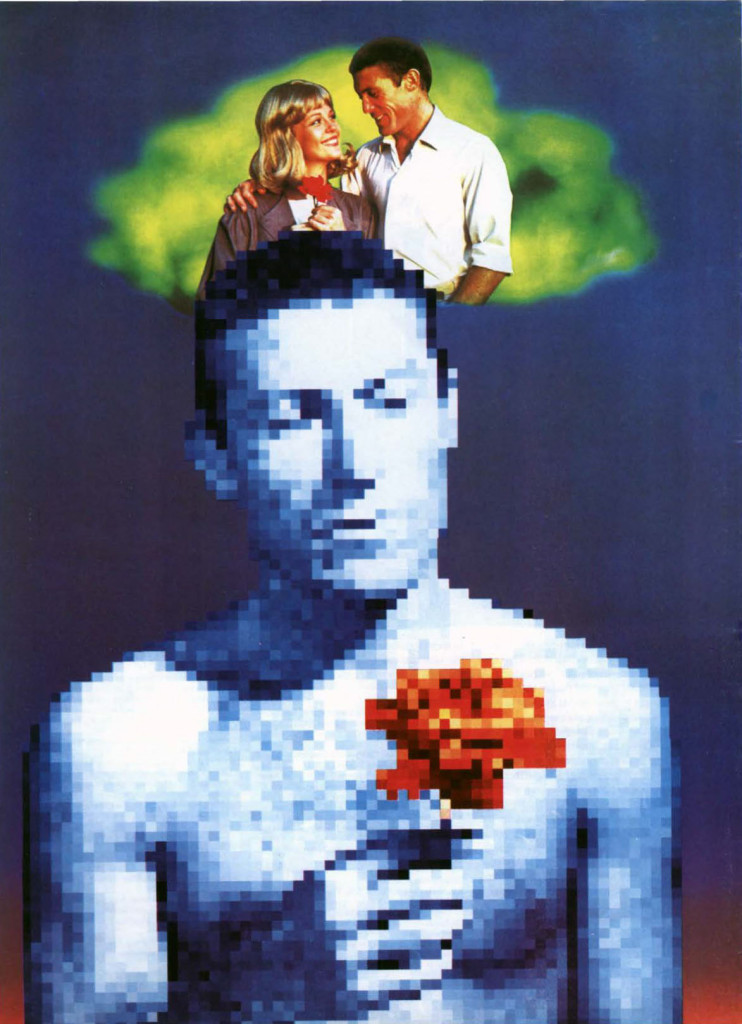
Since the time of Descartes, science has tried to reduce reality to mathematical form. Yet the conscious experience of form, color, and emotion remains stubbornly in a category of its own.
“Scientific psychology,” as the well known saying goes, “having first lost its soul, later its consciousness, seems finally to lose its mind altogether,” wrote philosopher Herbert Fcigl, director of the Minnesota Center for the Philosophy of Science. He thus summarizes one of the most fundamental trends in modern thought—the reduction of all spiritual and mental phenomena exclusively to biochemical brain functions.
Some philosophers have enthusiastically assisted in this task. Gilbert Ryle, renowned professor of metaphysical philosophy at Oxford University, says about the idea that the mind is something nonphysical, “I shall speak of it with deliberate abusiveness, as the dogma of the ‘Ghost in the Machine.’ I hope to prove that it is entirely false, and false not in detail, but in principle.”
One philosophical school, the eliminative materialists, goes so far as to advocate completely dropping words such as consciousness, feeling, seeing, or pain from the vocabulary of scientific discussion. They claim that these words are purely subjective and thus have no real meaning, even though this is contrary to all practical experience. Describing this approach, philosopher Richard Rorty of Princeton states that a representative of this view would say to someone, “It would make life simpler for us if you would in the future say, ‘My C-fibcrs are firing’ instead of saying I’m in pain.”
The philosophers, however, are merely following the lead of modern science, which from its very beginnings has been mechanistic. In 1750 the French physician de La Mettrie wrote, “Let us conclude boldly then, that man is a machine.” And in more recent times we find Oxford zoologist Richard Dawkins proclaiming, “We are survival machines—robot vehicles blindly programmed to preserve the selfish molecules known as genes.”
Scientist Herbert L. Melzer writes in The Chemistry of Human Behavior: “The full range of those emotional and intellectual capabilities which we regard as uniquely human originates in an incredibly complex overlay of neurochemical organization upon highly specialized morphological structures…. We do not need to mean anything more by the term mind than the total organization of functions, memories, and capabilities that characterize any particular brain.” Many scientists are not troubled by the profoundly depersonalizing social and psychological effects of this view. Professor John Taylor of King’s College, London, states: “The mind appears now to be a near-powerless ‘epiphenomenon’ of the physical brain.” He adds that realization of this fact “will cause a complete destruction of people’s understanding of their place in the world, as well as undermining the traditional institutions of society.” What solution does he propose? He simply urges that we “start to prepare people to live in a deterministic world. ”
Major movements in modern psychology have also taken a strictly mechanistic approach to mental phenomena. John B. Watson, a professor of psychology at Johns Hopkins University, was the founder of the behaviorist school. About consciousness, he wrote, “It has never been seen, touched, smelled, tasted, or moved. It is a plain assumption just as unprovable as the old concept of the soul.” Carrying this further, the most famous behavioral psychologist, B. F. Skinner, once declared that he would abolish what he calls “the inner man… the man defended by the literatures of freedom and dignity.” He further stated, “His abolition has been long overdue… he has been constructed from our ignorance, and as our understanding increases, the very stuff of which he is composed vanishes.”
Sigmund Freud’s psychology was also based upon an essentially materialistic view of human nature. Early in his career, Freud, then a neuroanatomist, embarked upon an ambitious project to demonstrate that mental phenomena were directly produced by an organic mechanism. Although he eventually gave up the attempt, he remained convinced about his hypothesis. “I… have no desire at all,” he wrote to a colleague, “to leave the psychology hanging in the air with no organic basis. But beyond the feeling of conviction (that there must be such a basis), I have nothing, either theoretical or therapeutic, to work on, and so I must behave as if I were confronted by psychological factors only. I have no idea why I cannot yet fit it together. ”
In recent times, some scientists have decided that if man is no more than a sophisticated thinking machine it might be possible for them to build such machines themselves. A leader in computer research, Marvin Minsky of M.I.T., believes that a machine will soon be created with “the general intelligence of an average human being…. The machine will be able to educate itself… In a few months it will be at genius level… A few months after that its power will be incalculable.” Then Minsky adds, “If we are lucky, they might decide to keep us as pets.”
Convinced that the new technology of artificial intelligence will enable man to replace almost everything, Professor Arthur Harkins, director of the Graduate Futures Program at the University of Minnesota, says that by the year 2000, people will be getting married to robots and society will begin to ponder the definition of “human.” This vision of a future adorned with humanoid computers may appear titillating to science-fiction buffs, but how well does it tally with what it really means to be human? Our thoughts, feelings, and desires lie at the very heart of what we all call the human experience. In their hasty dash to equate sophisticated machines with human beings, many philosophers, psychologists, and scientists have trampled upon some fundamental distinctions between the two.
The reason for their confusion can be traced to the basic strategy of modern science, which holds that everything can be explained according to relatively simple physical laws. Armed with this mechanistic assumption scientists can embark upon a study of the brain with the reasonable hope of eventually being able to account for, control, and duplicate all of its functions, including what we call consciousness.
But what if a nonphysical vital principle or force were involved? Then the investigative task becomes hopelessly complicated. So most scientists stick to the strategy of insisting that the brain can be explained by simple physical laws and proceed with their theories and experiments. As B. F. Skinner says in Beyond Freedom and Dignity, “Only then can we turn from the inferred to the observed, from the miraculous to the natural, from the inaccessible to the manipulable.”
There is, however, more to the human mind than information processing. It is consciousness itself that is the foundation of all experience, but no one can describe it by numerical expressions in the same way as chemical reactions, the force of gravity, and other physical phenomena. Yet just because it cannot be measured by quantitative means in no way denies its existence–consciousness can clearly be known by experience.
This suggests a serious limitation of the mechanistic approach, namely, that it can only describe behavior connected with consciousness but not consciousness itself. Faced with this difficulty, many scientists, rather than admit that consciousness is beyond physical description, choose to characterize it as nothing more than a complex pattern of behavior. This misconception allows them to suppose that machines and computers of sufficient sophistication can become conscious.
But there are many clear and direct examples showing how conscious awareness is entirely different from the physical behavior associated with it.
For instance, what happens when a person accidentally strikes his thumb with a hammer? Certain characteristic patterns of behavior result— the person may shout, wave his hand, grimace, etc.
An examination of the body’s reaction will reveal chemical changes in the blood, patterns of electrochemical impulses in the brain, and so forth. While these measurable effects are part of the event, they are distinct from the experience of pain itself. Although everyone readily understands the sensation of pain because it is a common conscious experience, it cannot be defined in physical terms. Therefore science prefers to confine itself to what can by physically described—namely, patterns of electrochemical impulses. But if the brain is no more than an information processing device for these impulses, then what makes it any different from the machines the scientists themselves use to record experimental data from the brain?
The answer is clear—in describing the functioning of the machine we have no need to bring in any concept of pain. That is, we have no need to suppose that the machine feels pain. The same thing is true of a description of the brain. Yet we know from experience that a person feels pain. Therefore, the concept “experience of pain” is something independent and distinct from all our ideas and statements about the functioning of machines and of brains.
Let us imagine a second instance—a machine that when exposed to a red light would say. “I see a red light.” Such a machine could be built by connecting a photocell with a red filter to an amplifier. When triggered, the amplifier would turn on a tape recorder that plays back the message. “I see a red light.”
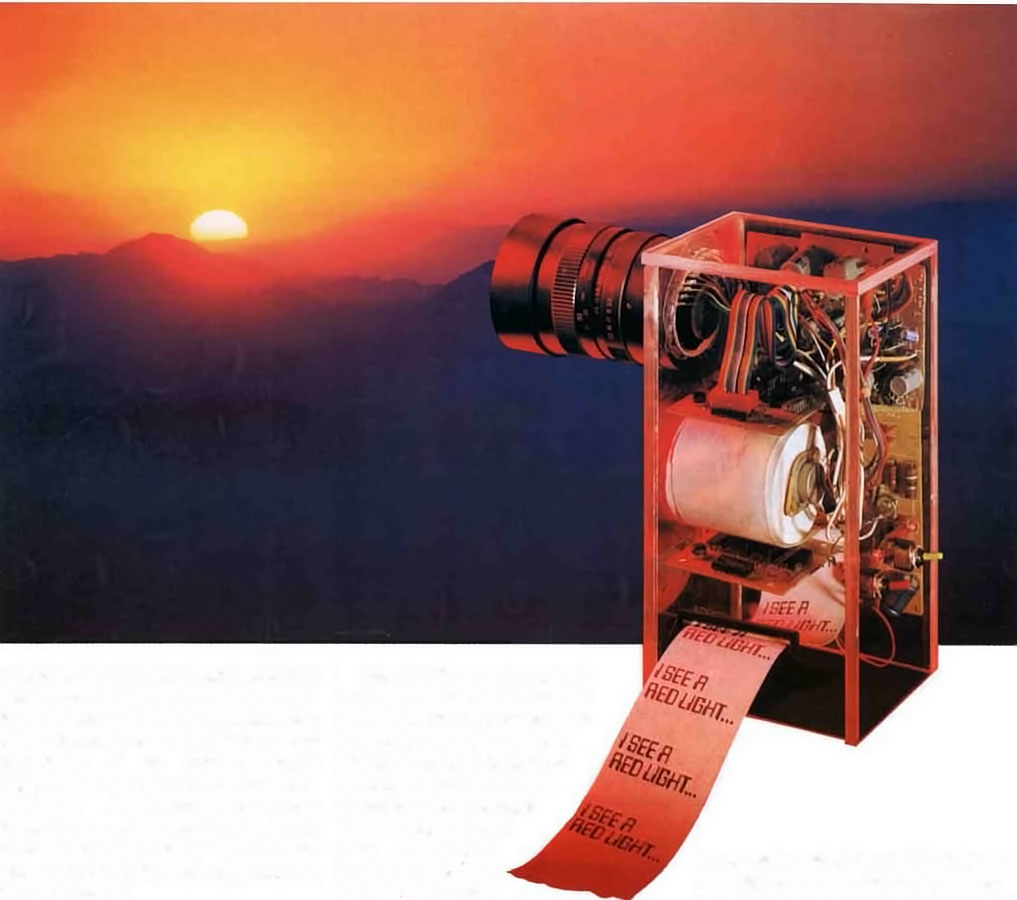
A machine can easily be built that responds to red light with the statement, “I see a red light.” but does the experience of seeing red light accompany this mechanical response?
Although the machine declares that it “sees” a red light, no one in his right mind would imagine that it is actually “seeing” anything. Similarly, a tape recorder receives sound impulses but does not hear, and an automobile moves but does not itself experience motion. While machines perform certain activities that could duplicate those of a human being, all the actions of the machine are reducible to a mechanistic explanation. But in the case of a human being endowed with conscious awareness, physical description is inadequate to describe his personal experience. The human body behaves somewhat like a complex machine, and its actions can be described in physical, measurable terms to some extent. But beyond these physically quantifiable descriptions, which deal exclusively with the mechanics of behavior and perception, is the non-quantifiable realm of consciousness. Admittedly, science has succeeded in accounting for certain observable phenomena in strictly physical terms, but we should not extrapolate and conclude that everything—including consciousness–can be explained mechanistically. Other possibilities not only exist, but are frequently more reasonable and comprehensive, and we should remain open to consider them.
Even Thomas Huxley pointed out the irreducible nature of consciousness. He stated, “I understand the main tenet of materialism to be that there is nothing in the universe but matter and force: and that all the phenomena of nature arc explicable by deduction from the properties assignable to these two primitive factors… It seems to me pretty plain that there is a third thing in the universe, to wit, consciousness, which…
I cannot see to be matter or force, or any conceivable modification of either.”
Nevertheless, many scientists reject the idea that consciousness has any reality and remain determined to account for it in mechanistic terms.
A popular current theory known as functionalism, which provides a framework for research in artificial intelligence, relegates the activities of the mind to computerlike responses to external stimuli. The concept of consciousness is dismissed, and all human feelings and sensations are reduced to mathematical constructs.
For example, in the case of a headache, the experience of pain (which we naturally consider to be the headache) is not referred to at all. What then is a headache? Hard as this may be to believe, MIT artificial intelligence researcher Jerry A. Fodor, one of functionalism’s main proponents, states, “To have a headache is to be disposed to exhibit a certain pattern of relations between the stimuli one encounters and the responses one exhibits.” In other words, what he calls a headache is defined to be some brain software that makes us behave as if we have a headache. But pain itself is left out of the picture, because pain cannot be written into a computer program.
Due to this obvious failure to explain personal experiences, even Fodor, who is fully committed to a physical explanation of consciousness, admits that mechanistic theories such as functionalism are incomplete. He states, “Many psychologists who are inclined to accept the functionalistic framework are nonetheless worried about the failure of functionalism to reveal much about the nature of consciousness. Functionalists have made a few ingenious attempts to talk themselves and their colleagues out of this worry, but they have not, in my view, done so with much success. As matters stand, the problem of qualitative content [of consciousness] poses a serious threat to the assertion that functionalism can provide a general theory of the mental.”
Because the issue of consciousness has raised a fundamental impasse in all mechanistic attempts to explain human existence, some scientists have rejected the widely accepted mechanistic viewpoint. Among the dissenters is renowned Nobel-laureate physicist Eugene Wigner. “There are two kinds of reality or existence: the existence of my consciousness and the reality or existence of everything else.” states Wigner, “The latter reality is not absolute but only relative.” Wigner observed that external, measurable phenomena are known to him only by virtue of his consciousness, and thus consciousness is, if anything, more real than these phenomena. After extensive research in this area, Alan Gevins of EEC Systems Laboratory in San Francisco concluded that the mind may have transcendent qualities. Gevins says, “When it comes to creativity, inspiration, the more ethereal aspects of the mind—well, they might ultimately be mysterious. I’m not as firm as some of my colleagues in the belief that the mind can be reduced to a flow of electrons.”
A Historical Overview of the Mind-Body Problem
Throughout history, many scientists and philosophers have contemplated how to define the subtle and remarkable mind. The analysis of the relationship between consciousness and the brain is known in Western thought as the “mind-body problem.”
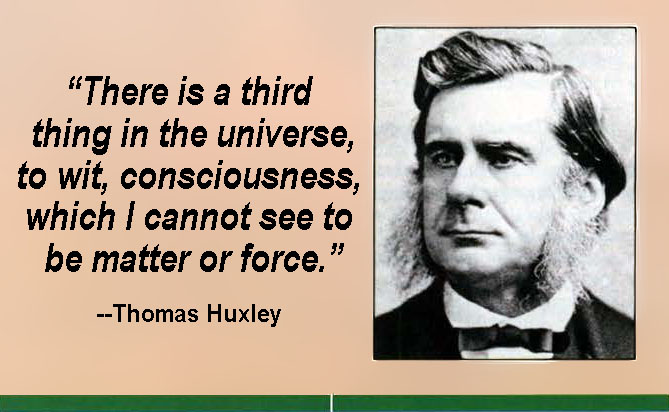 We have seen that consciousness cannot be accounted for in physical terms, but that still leaves open many questions. What exactly is consciousness, and how is it related to the brain? If it is simply a product of the brain’s higher neural centers it may be possible to account for it by a nonquantitativc description of the brain. Or could it be that consciousness is associated with a separate entity connected with the brain? In Western thought, the words mind and self have been used interchangeably to name this entity. For the time being, therefore, we shall also use the words mind and self in this specific sense. But we shall later point out a fundamental distinction between the mind and the conscious self.
We have seen that consciousness cannot be accounted for in physical terms, but that still leaves open many questions. What exactly is consciousness, and how is it related to the brain? If it is simply a product of the brain’s higher neural centers it may be possible to account for it by a nonquantitativc description of the brain. Or could it be that consciousness is associated with a separate entity connected with the brain? In Western thought, the words mind and self have been used interchangeably to name this entity. For the time being, therefore, we shall also use the words mind and self in this specific sense. But we shall later point out a fundamental distinction between the mind and the conscious self.
Traditionally, Western thinkers have regarded consciousness or mind as nonphysical and distinct from the brain. One well known mind-body theory of this type was presented by seventeenth-century French mathematician and philosopher Rene Descartes. His dualistic conception postulated two kinds of substances—mental and corporal. The essence of a mental substance is that it has thoughts and is conscious of them, and the essence of a corporal substance is that it has position in space. Mind and matter can and do interact and influence one another: matter inlluencing mind is called sensation, and mind influencing matter is called the exertion of will. Thus his theory became known as interactionism.
Descartes reasoned that mind, as a non-physical substance, would not occupy position in space. But his opponents insisted that a mind without position in space would be unable to influence the material body, which has a position in space. This was a criticism that Descartes never effectively countered.
One reason for Descartes’ failure was the way he conceived of the mental substance. He assumed that if something has certain fundamental characteristics that cannot be described in physical terms, then all of its properties must be beyond physical description. But it is within the realm of possibility that a nonmaterial substance could also possess some properties that can be placed within the framework of material measurement.
For instance, there is no logical reason to exclude the possibility of a nonmaterial mental substance having position and being able to interact with the brain. But opponents of Descartes’ theory, among whom may be numbered most physicists, strongly reject such interactionism because it would violate the laws of conservation of energy and momentum. If a nonphysical entity, the mind, inlluences the brain, it would tend to alter the brain’s energy states, a phenomenon physicists would find unacceptable because it clashes with their equations defining the laws of physics. These equations specify that matter moves solely according to causes governed by physical laws. If nonphysical causes and laws were involved, the equations of physics would no longer suffice to describe the movements of matter.
Here we might point out that as of yet no one has proved that all matter obeys only the physical laws. In particular, no one has ever offered a complete mathematical description of the brain and its functions. Within the human brain there are one hundred billion nerve cells. No one can possibly trace out or monitor all the energy transfers in the brain. Therefore the physicists’ objection to interactionism is simply not valid, and is fostered by a desire to impose a particular, restrictive view of the mind’s relationship with the brain.
Before Descartes practically all thinkers accepted that the mind or self was different from the body or brain. Descartes attempted to formulate this dualism in such a way as to overcome the objections of those who were being influenced by the rise of mechanistic science, which had no room for nonphysical substances. But his explanation left so many questions unresolved that most thinkers approaching the mind-body question after Descartes gave up interactionism.
Others made cautious efforts to formulate dualistic models that did not interfere with the known laws of physics. One such idea is epiphenomenalism. the proponents of which include Darwin’s champion, Thomas Huxley. Epiphenomenalism presents what seems to be dualism of the mind and brain, but is really an attempt to maintain the superiority of mechanistic views by employing a highly unusual model. Epiphenomenalism states that matter gives rise to a nonphysical consciousness, but theses tales of consciousness have no inlluence on matter. This model has two major shortcomings. First, it doesn’t explain how consciousness could arise from matter. Second. the idea that consciousness doesn’t act upon matter is extremely awkward. In physics, all aspects of a physical system have some effect on the behavior of the total system. Why should consciousness be an exception?
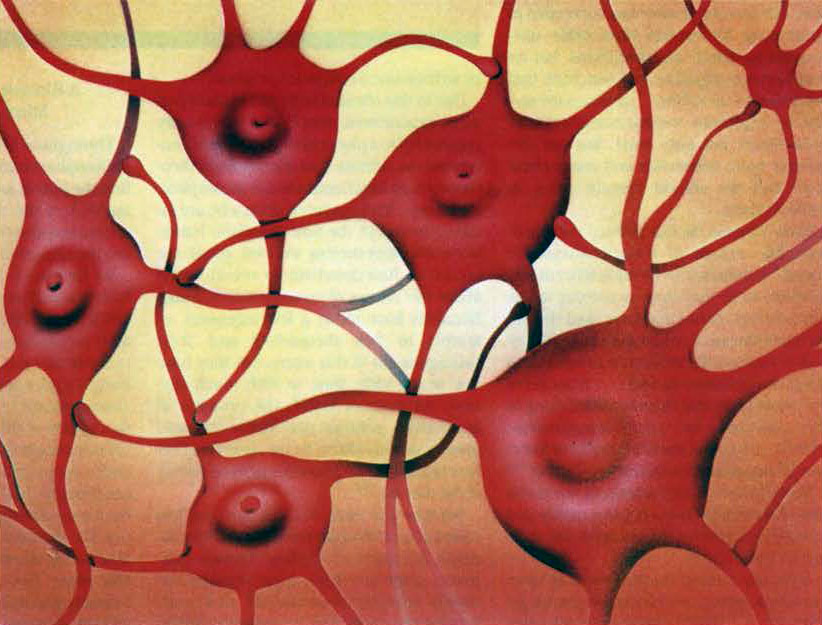
Some scientists say consciousness cannot influence brain action, since this would violate the laws of physics. But who can show that the billions of neurons in the brain precisely follow these laws? No, one can monitor all the biochemical energy transfers within the brain.
A Nondualistic Approach
Another school of thought, monism, proposes that the mind and the brain are one and the same. There are a number of monistic models—some deny consciousness and others identify it wilh the physical structures of the brain.
One such school of monistic thought holds that matter inherently possesses the attribute of consciousness. This view, which can be termed panpsychism, is historically identified wilh the seventeenth-century Dutch philosopher Baruch Spinoza, who slated, “Omnia quamvis diversis gradibus. animatasunt”—that everything in existence is to one degree or another animate, or conscious. Spinoza believed in one universal substance, each part of which has both physical and psychic properties. According to this view, even an atom would have some dim atomic awareness, and as more complex organizations of mattcr developed, then correspondingly more complex forms of consciousness would emerge.
Such ideas are useful for biologists, who almost without exception believe that life has evolved from matter by physical laws. Given this mechanistic assumption, there arises the problem of explaining the origin of consciousness. Panpsychism, which attributes some degree of consciousness to even disorganized matter, provides a possible evolutionary explanation. One proponent of this approach is German zoologist Bernhard Rensch. He posits, in addition to the physical properties of matter, what he calls “parallel psychic components,” such as consciousness. “Molecules and atoms should also be credited with basic parallel components of some kind,” he slates. These parallel processes can be recognized as such only after the respective molecules have become part of Ihe psychophysical substance (nerve and sense cells) of an organism, so that the parallel components form a complex of conscious phenomena that can be ‘experienced’.
A major difficulty with this approach to panpsychism involves the unity of consciousness. If every atom is separately conscious, then what mechanism integrates their awareness? Why should a carbon atom in a human brain, for instance, feel any different than when it is in a piece of wood? And since the brain is merely a combination of various atoms, why is the brain’s consciousness unified and not just a mere sum total of all these atomic consciousnesses? This difficulty has been recognized by Nobel-laureale neurobiologist John C. Eccles, who wrote, “Hitherto it has been impossible lo develop any neurophysiological theory that explains how a diversity of brain events comes to be synthesized so that there is a unified conscious experience of a global or gestall character. The brain events remain disparate, being essentially the individual actions of countless neurones that are built into complex circuits.”
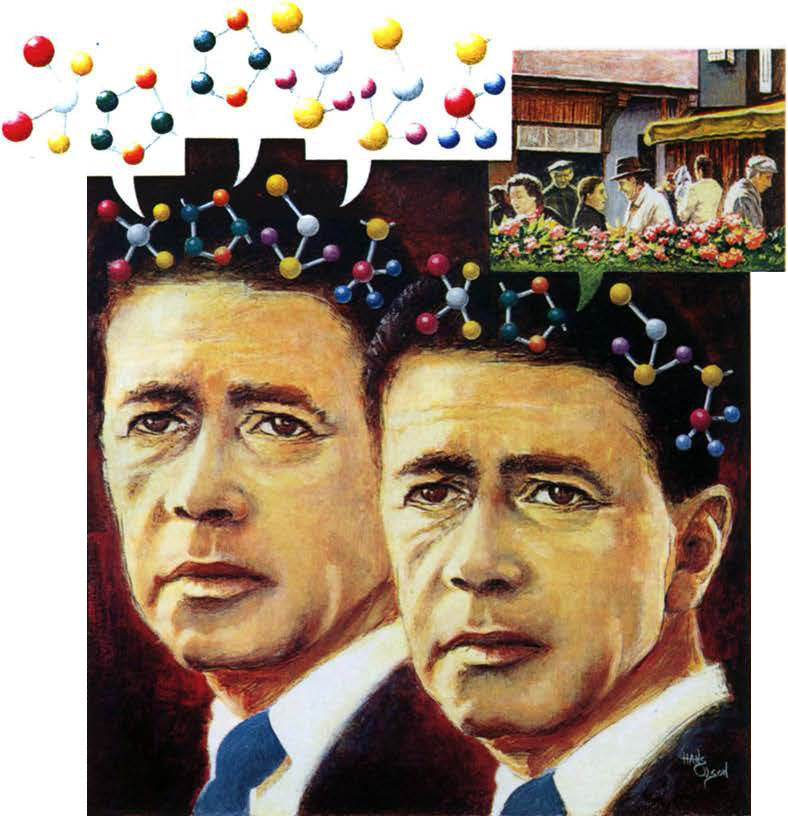
Panpsychism attributes atomic consciousness to each atom. Granting this, why should our consciousness be more than a mere collection of disunited atomic experiences?
Scientists such as Rensch, attempting to overcome this problem, have offered the explanation that patterns of matter also have consciousness, and that we are merely one set of these patterns. But if this is so, then two conclusions follow. First, there must exist complex metaphysical laws governing the production of consciousness in response to the presence of certain patterns. Second, the consciousness of the pattern must be—in comparison with the individual consciousness of each element of the pattern—an entirely new metaphysical entity, a “higher” consciousness capable of accounting for our unified human experience. At this point we would have within the human body a rather complicated metaphysical apparatus consisting of varieties of conscious entities (trillions of semiconscious atoms, patterns possessing higher unifying consciousness) and laws governing their appearance. It would be simpler, however, to revive the concept of the soul—a single irreducible unit of consciousness capable of functioning as the integrator of experience with the body.
John C. Eccles and philosopher Karl R. Popper propose something like this in their book The Self and Its Brain. Recognizing the shortcomings of monistic theories, they formulate a version of interactionism between the mind and brain. Eccles states, “The experienced unity [of consciousness] comes, not from a neurophysiological synthesis, but from the proposed integrating character of the self-conscious mind.”
Popper gives several strong arguments for the nonphysical nature of the mind, pointing out that conscious awareness is real and directly experienced by the conscious self, yet inexplicable by our concepts of matter. He points to the difficulty in all attempts to attribute sophisticated behavior, such as elaborately purposeful action, to intermolecular forces, and explains how such behavior can easily be understood in relation to a mind endowed with purpose and desire.
The majority of scientists insist that all mental phenomena are functions of the physical brain and nothing more.
Although entertaining dualistic ideas concerning the mind and body. Popper and Eccles still cling to the notion that the mind has a material origin, suggesting that it somehow emerges from matter and then interacts with it. But as we have previously observed, such a totally unpredictable appearance of a distinct, nonphysical mind from matter raises, to say the least, severe difficulties—most specifically, how could it happen? Popper and Eccles don’t know.
Popper himself admits. “From an evolutionary point of view, I regard the self-conscious mind as an emergent product of the brain… Now I want to emphasize how little is said by saying that the mind is an emergent product of the brain. It has practically no explanatory value, and it hardly amounts to more than putting a question mark in a certain place in human evolution.” Those who advocate the emergence of consciousness thus find themselves in the same position as the cosmologists who propose that the universe pops out of nothingness. In each case something qualitatively new unpredictably pops up.
The great majority of scientists, however, continue to insist that all mental phenomena are functions of the physical brain and nothing more. One of their most common objections to the idea that the mind could be fundamentally different from the brain is that if you alter the brain the mind is also altered. It has been observed that when the speech center of the brain is damaged, a person may become unable to speak, and that by injecting drugs into the body, mood changes and hallucinations may result, etc. People therefore frequently conclude that the mind must be manifested from the physical brain, for otherwise brain states would not affect mental states.
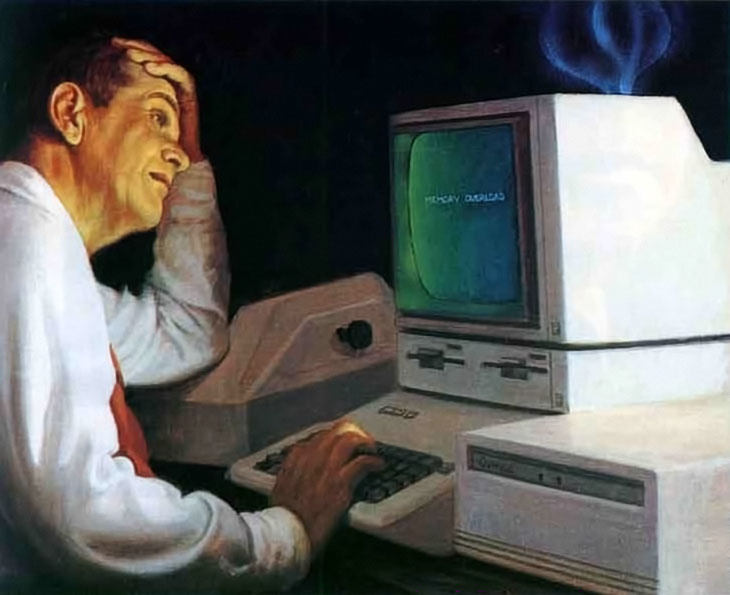
A conscious being whose physical brain is damaged may be compared to a programmer whose computer has broken down.
This is not the only possible interpretation. Such a correlation could be due to a nonphysical mind using the brain to carry out various functions, in a manner similiar to an operator using a computer. This view was held by renowned neurosurgeon Wilder Penfield, whose extensive investigation of brain functions led him to conclude that “It is, in a sense, the mind with its mechanisms that programs the brain.” The mind may become seemingly dependent upon the brain, just as a businessman engaging a computer for inventory calculation may rely on the computer for his work. Should the computer become damaged, the businessman would certainly become impaired in his ability to function; and if the section of the computer memory dealing with inventory reports is wiped out, he would be entirely unable to review his stock. If the brain is such a computerlike instrument, then in cases of brain damage or chemical disturbance we would expect to see an impairment of the mind’s functional capacity even though the mind is an entirely separate entity.
Empirical Evidence for a Conscious Self
Thus far we have analyzed the drawbacks of the mechanistic understanding of consciousness and have touched on the history of the mind-body question. In our discussion we have introduced the concept of how the mind interacts with the brain, much like a programmer with his computer. A skeptic might ask if there exists any direct empirical evidence in support of this. There is indeed, although like all empirical evidence it is subject to varying interpretation. Examples of findings showing that the mind is independent of the material brain and body are supplied by research into near death experiences (NDEs) and reincarnation memories.
NDEs include out-of-body experiences— in which people report observing their physical body and events relating to it from a perspective outside of the body during severe illness or physical trauma resulting in unconsciousness. A typical case might involve a person who is resuscitated from a heart attack and reports that he observed, from a point outside his body, the medical personnel endeavoring to revive him. At such times, according to standard medical opinion, the normal functioning of the brain, as indicated by certain brain waves, is impaired, and the patient should be unconscious, if indeed consciousness is just a manifestation of the brain.
Although a percentage of the research on NDEs is unreliable, other work has been presented by individuals with impeccable scientific credentials. For example. Dr. Michael B. Sabom, a cardiologist and professor at the Emory University Medical School, was openly skeptical of NDEs but changed his mind after investigating them.
He formed a control group of 25 seasoned’ cardiac patients who had survived heart attacks but who had never had an out-of-body experience. Sabom asked them to describe their resuscitation from heart attacks. Of these, 20 made a major error in their description of in-hospital cardiopulmonary resuscitation (CPK), three gave a limited but correct description, and two claimed to know nothing of CPR.
Another group consisted of 32 patients who had reported out-of-body experiences. Of these, 26 gave general visual descriptions of their near-death crises, 6 described details corresponding to the medical records of their particular resuscitation, and one man’s account was “extremely accurate in portraying the appearance, technique. and sequence of the CPR.”
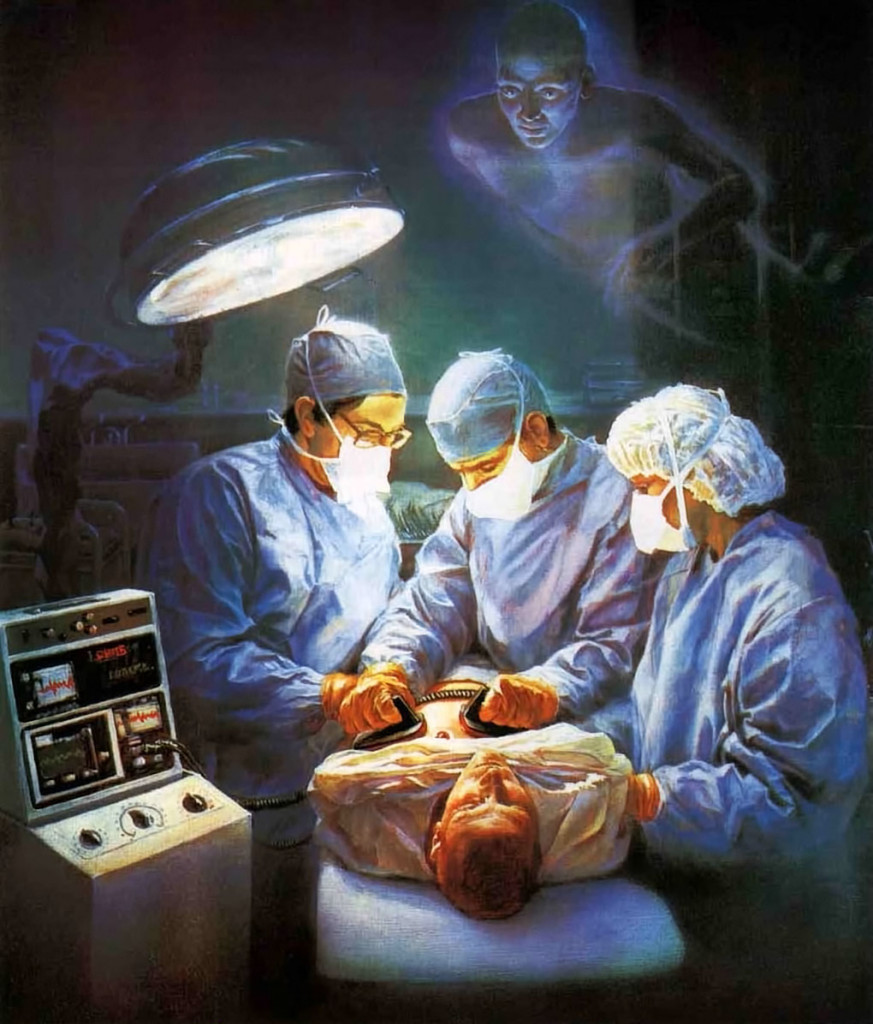
During crises such as heart failure, some people, who clinically should have been unconscious, have observed events from a perspective outside their bodies and reported verifiable details later.
In the control group, not one person gave a detailed account of the medical procedures involved in their resuscitations, whereas in the group with out-of-body experiences 6 were able to do so, even though they should have been unconscious at the time. This and other studies led Sabom to accept that the patients’ NDE experiences were real. Some physicians who doubt the reality of NDEs have suggested that perhaps the subjects were semiconscious and are therefore able to recall their experiences. But Sabom notes that while occasional patients remain semiconscious during surgery, their reports lack visual awareness and tend to be nightmarish in quality, in contrast with the highly visual and pleasant quality of the NDEs.
Others also put forward the possibility that NDEs are the product of a particular cultural or religious background that somehow induce the patient to imagine an NDE. Examining this possibility, Sabom interviewed numerous subjects and found that NDEs occur in 40 percent of randomly interviewed near-death survivors, with no correlation to age, sex, race, area of residence, size of home community, years of education, occupation, religious background, church attendance, or prior knowledge of the existence of NDEs.
Dr. Russel Noyes and Dr. Richard Blacher have suggested that NDEs are a psychological reaction to one’s perception of imminent death, an attempt by the ego to preserve itself by taking refuge in a flight of fantasy. Sabom shows, however, that NDEs have been reported in cases of unanticipated near-death crises. For example, one man described. “I was walking across the parking lot to get into my car… I passed out. I don’t recall hitting the ground. The next thing I do recall was that I was above the cars, floating. I had a real funny sensation, a floating sensation. I was actually looking down on my own body, with four or five men running toward me. I could hear and understand what these men were saying.”
Based on his extensive research and his thorough analysis of various alternative explanations, Sabom arrived at the following conclusion concerning the mind-brain question: “If the human brain is actually composed of two fundamental elements— the ‘mind’ and the ‘brain’—then could the near death crisis event somehow trigger a transient splitting of the mind from the brain in many individuals?… My own beliefs on this matter are leaning in this direction. The out-of-body hypothesis simply seems to fit best with the data at hand. … Could the mind which splits apart from the physical brain be, in essence, the soul, which continues to exist after final bodily death, according to some religious doctrines? As I see it, this is the ultimate question that has been raised by reports of the NDE.”

Accounts of memories of past lives have been frequently plagued with inaccuracies and fraud, but at the same time, rigorous, unbiased studies have been carried out by serious researchers, such as Ian Stevenson, Carlson Professor of Psychiatry at the University of Virginia.
Accounts of memories of past lives have also been frequently plagued with inaccuracies and fraud, but at the same time, rigorous, unbiased studies have been carried out by serious researchers. One such investigator is Ian Stevenson, Carlson Professor of Psychiatry at the University of Virginia. Stevenson has extensively investigated spontaneous reincarnation memories recounted by children. In some cases he has been able to positively corroborate what the child has claimed by thoroughly investigating details of the place and people they describe, including the dead person they claim to have been. Stevenson has assembled numerous accounts and verified them, always taking great care to screen out fabrications.
An example is the case of Sukla, the daughter of a Bengali railway worker. When she was very young, she would cradle a pillow in her arms like a doll and call it by the name Minu. She behaved as if Minu were her daughter, and also spoke of Minu’s father and his two brothers. According to Sukla, they all lived in Bhatpara, and she insisted her parents take her there. Sukla’s father investigated and learned that there had lived in Bhatpara a woman named Mana who had died a few years before, leaving behind a baby daughter named Minu. Sukla’s father became convinced his daughter had previously lived as Mana. When Sukla was brought by her family to Bhatpara, she led them to the house where Mana had lived. Then, from a group of over thirty strangers, she picked out Mana’s husband, mother-in-law, and brother-in-law as well as the girl Minu. These details and many others were extensively researched and corroborated.
Stevenson is skeptical of the well-known hypnotic age-regression technique, recognizing that the material cannot be properly confirmed and that the mind tends to fabricate illusions, especially under hypnosis. He therefore does not generally accept statements made under hypnosis as evidence. In some cases, however, the statements can be researched and verified, such as the case he titles “A Case of Xenoglossy.” In this instance, an American woman living in Philadelphia was regressed hypnotically and manifested the personality of a Swedish peasant farmer. She spoke fluent Swedish, although she had no prior contact with Swedish in her life: native Swedes confirmed her pronunciation to be fluent, even though many Swedish vowel sounds are extremely difficult for Americans to enunciate. Stevenson’s studies give convincing evidence that the conscious self can travel from one physical body to the next. Clearly, when one body dies, the contents of its brain are destroyed, and there is no known physical process by which they can influence the contents of another brain. The simplest interpretation is that the conscious self must be an entity distinct from the brain.
A Nonmechanistic Description of Consciousness
At this point we would like to introduce an alternative solution to the mind-body problem. Rather than cling to the inadequate and overly restrictive confines of models that conform to mechanistic views, we propose a clean break. Let’s examine a new paradigm based on the nonmechanistic description of consciousness in the Bhagavad-gita, a rich source of information on the mind-body question from the ancient Vedic tradition of India. It is a view that is at once simple, comprehensive, and logically consistent. In our previous review of the theory of panpsychism the concept of individual atoms possessing a minute degree of consciousness was presented: we noted the many difficulties accompanying this particular theory of consciousness. But what if there were one special atom that was conscious of the entire body? The Bhagavad-gita affirms the presence within the body of a distinct entity, the conscious self, and establishes it as an irreducible, individual quantum or atom of consciousness. The conscious self is superior to the brain and its functions. It is not a hypothetical entity. The existence and nature of the conscious self can be investigated through direct and reproducible experience, which can be obtained by the practice of yoga techniques. The conscious self can be associated with various material bodies, human and nonhuman, and can transmigrate not only within one species but between species. It is also capable of functioning apart from any material body whatsoever. Its primary characteristics are nonphysical, i.e., they cannot be adequately described in quantitative terms: yet it occupies a definite position in space, and acts to integrate numerous sensations, thoughts, and emotions into one unified state of awareness. The conscious self does not interact with matter according to the known laws of physics, such as the law of gravity or the laws of electromagnetism. Instead, it obeys a different set of laws, which can be called higher-order psychological laws. These include the law of karma. In the final chapter we will discuss the characteristics of the conscious self in greater detail.
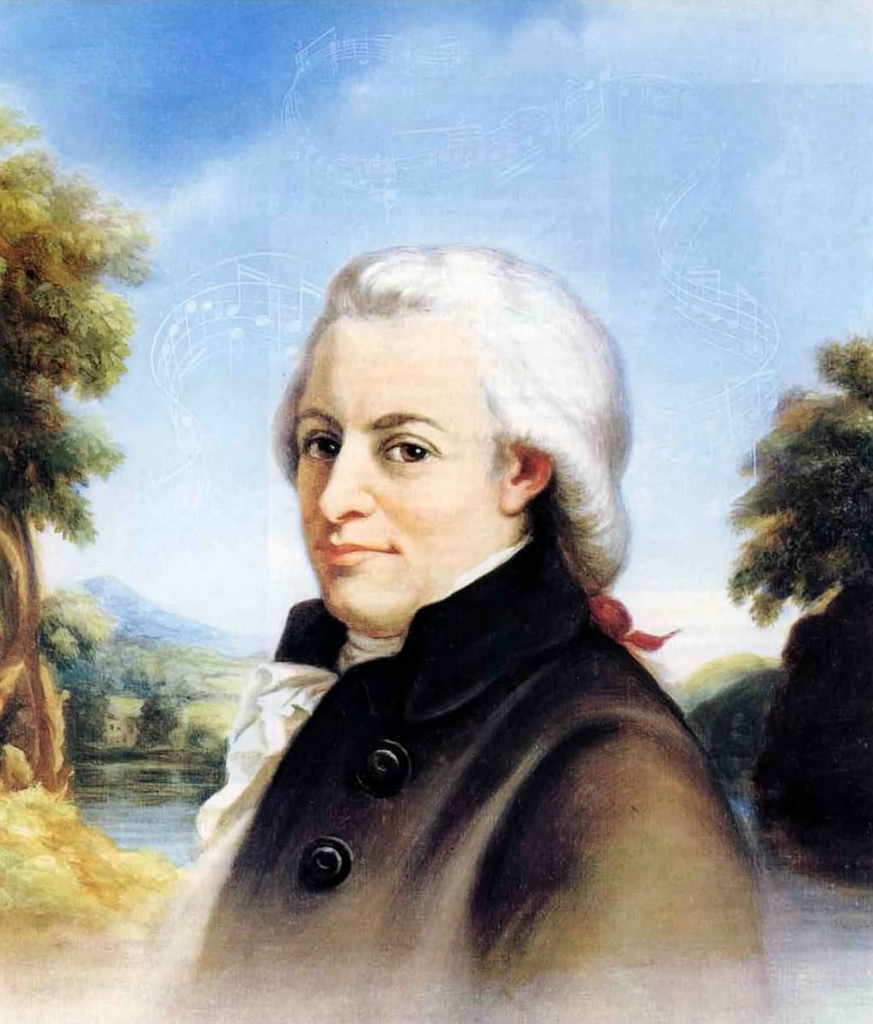
Creative personalities such as Mozart often depend on the phenomenon of inspiration, in which ideas inaccessible by conscious effort spring unbidden into the mind as though from a higher source.
Mozart and Inspiration
The linking mechanism between the conscious self and matter was one of major stumbling blocks in Descartes’ dualistic theory. This difficulty is surmounted by the idea of the Supersoul, which according to Bhagavad-gita serves as the interface between the conscious self and the brain. The Supersoul is also said to be the source of memory, knowledge, and forgetfulness. Evidence for the Supcrsoul’s existence may be found in the experience of inspiration, in which ideas extremely difficult to conceive by normal mental endeavor enter one’s consciousness fully formed, as if from some external source.
Inspiration plays a central role in the solution of difficult problems in all creative human endeavors. From the field of music we will give a striking example in which ideas for musical compositions appeared fully formed in the mind without apparent conscious effort.
Wolfgang Mozart once described how he created his works: “When I feel well and in good humor, or when I am taking a drive or walk… thoughts crowd into my mind as easily as you could wish. Whence and how do they come? I do not know and have nothing to do with it… Once I have a theme, another melody comes, linking itself with the first one, in accordance with the needs of the composition as a whole. It does not come to me successively, with its various parts worked out in detail, as they will be later on, but it is in its entirety that my imagination lets me hear it.”
Inspiration also plays a central role in the solution of difficult problems in science and mathematics. Generally, investigators can successfully tackle only routine problems by conscious endeavor alone. Significant advances in science often involve sudden inspiration, which in many instances occurs unexpectedly after a lull in a long period of intense but unsuccessful conscious endeavor.
A typical example is the experience of mathematician Karl Gauss. After trying unsuccessfully for years to prove a certain theorem about whole numbers. Gauss suddenly became aware of the solution. He described this experience as follows: “Finally, two days ago I succeeded… Like a sudden flash of lightning the riddle happened to be solved. I myself cannot say what was the conducting thread which connected what I previously knew with what made my success possible.”
From these incidents we discover that the phenomena of inspiration has two significant features. First, its source lies beyond the subject’s conscious perception: and second, it provides a subject with information unobtainable by any conscious effort. The famous French mathematician Henri Poincare, after deeply considering the phenomenon of inspiration in his own work, was led to contemplate an idea reminiscent of the idea of Supersoul. Poincare called this the subliminal self and described it in this way: “[lt] is in no way inferior to the conscious self; it is not purely automatic; it is capable of discernment; it has tact, delicacy; it knows how to choose, to divine. What can I say? It knows better how to divine than the conscious self, since it succeeds where that has failed. In a word, is not the subliminal self superior to the conscious sell?”
Having approached this idea. Poincare then backs away from it, saying, “I confess that for my part, I should hate to accept it.” He then offers a mechanical explanation of how the subliminal self, viewed as a machine, could account for the observed phenomena of inspiration. Poincare proposed that the “subliminal self must mechanically put together many combinations of mathematical symbols at random until at last it finds a combination satisfying the desire of the conscious mind for a certain kind of mathematical result.”
Yet Poineare well knew that the number of combinations involved in such a brute-force approach to problem solving could easily exceed the number of operations that the brain could reasonably be expected to perform in a short period of time. Furthermore, Poincare’s proposed mechanism did not account for the qualitatively new features occurring, for example, in the compositions of Mozart—features that seemed to appear as an unexpected gift and were not obviously solutions to any fixed problem.
Since we know so little about the workings of the brain, it is not possible, of course, to completely rule out the possibility that inspiration might be produced by some brain mechanism—a mechanism whose origin would also need to be explained. However, it is also not possible at present to prove that inspiration does originate from such a mechanism, and therefore the possibility that the all-pervading super-consciousness may be responsible should not be hastily rejected.
If we pursue this idea, we will find that it yields insight even into the affairs of our daily lives. While most cases of inspiration deal with unusual mental accomplishment, the superior nature of the connecting link between the self and matter can also be appreciated in these ordinary affairs. When we desire to perform physical actions, we generally find that the body acts immediately. We have no clear understanding how our will gives rise to actions. They simply seem to occur automatically, and thus we normally take them for granted and assume “I am doing this.” But careful thought reveals that many of these actions appear to be happening under the guidance and control of a power other than our own.
In daily life we constantly make decisions and rely on the power of our intelligence. But what is that intelligence? Like inspiration, intelligence gives direction like a higher authority: the living being cannot act without the use of intelligence. If one fails to take advantage of intelligence and acts without consulting it, he becomes a deranged man and is lost to the world. Thus a living being is dependent on the superior direction of intelligence, and it guides him just as a father gives direction to his son. According to the Bhagavad-gita, this higher source of inspiration and intelligence, which is present and residing within every individual being, is known as the Supersoul, the universal consciousness. The Supersoul, which is always distinct from and superior to the individual soul, is the link between the conscious self and the brain. Without directly contacting the individual conscious self, the Supersoul perceives its desires (much as wc detect the fragrance of a flower without touching it) and translates them into action. This coordination between subtle conscious desires and material actions takes place within the framework of higher natural laws, known collectively as the law of karma. The Supersoul, acting freely in accordance with these laws, which are His own conventions, generates actions in the world of matter. When scientists observe these actions they may appear to be following the known laws of physics. But if we could analyze these actions thoroughly enough, we would find that the Supersoul is above the physical laws as the controller of them.
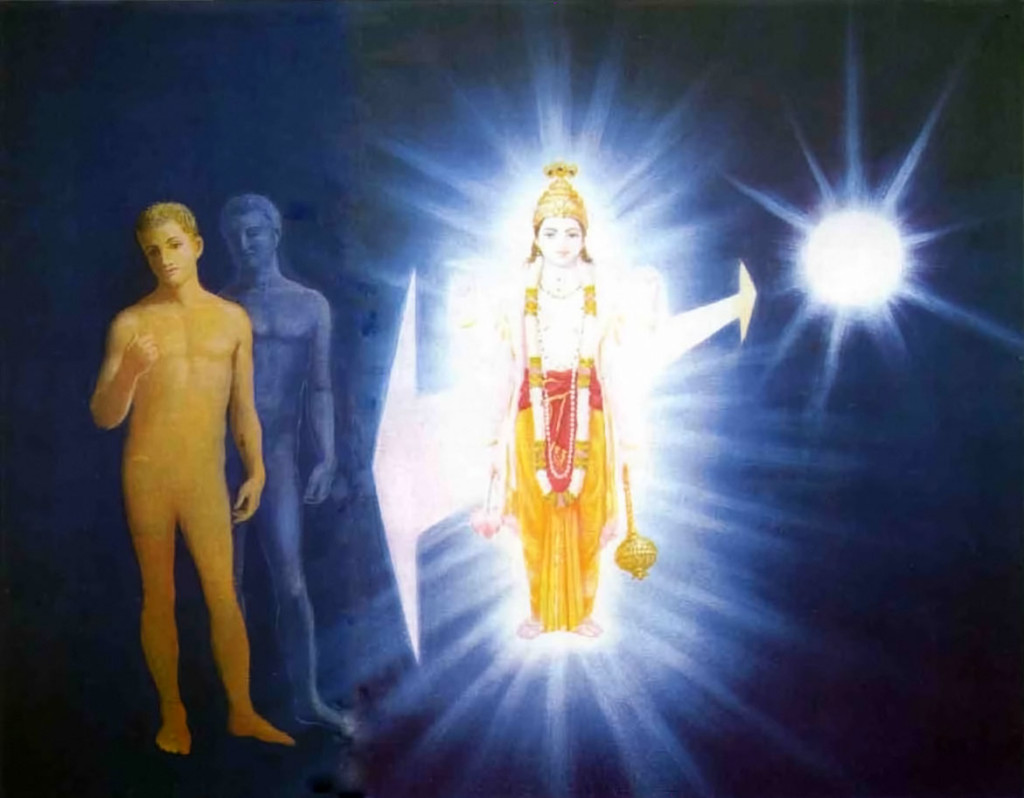
As shown in this symbolic illustration, the Supersoul provides the link between the conscious self and the subtle and gross material bodies.
Thus far, in line with the traditional Western approach, we have considered the conscious self and the mind to be synonymous and have distinguished between them and the body. Here we would like to briefly mention that in Bhagavad-gita a further distinction is made between the conscious self and the mind. According to the Gita, the mind is composed of subtle material elements that are capable of interacting with the brain. In this conception, the mind is really a part of the material body, and indeed can be referred to loosely as the subtle body. The Bhagavad-gita explains that the conscious self is higher than both the mind and the body because it possesses an imperishable, nonphysieal nature. When we say that the Supersoul is the link between the conscious self and the body, what we really mean is that the Supersoul is the link between the conscious self and both the subtle and gross material bodies. The interaction between the Supersoul and the conscious self is, undoubtedly, difficult to evaluate experimentally, but the two are so intimately connected there is full potential within each person for direct awareness of the Supersoul. This potential can be positively developed through the process of yoga, which will be more fully discussed in the final article in this magazine.











Hare Krsna Prabhuji,
In Srimad Bhagavatam second canto,if intelligence is described as a product of mode of passion and mind is a product of mode of goodness then how is intelligence above mind.
Please give me the actual canto and verse number and I will let you know.